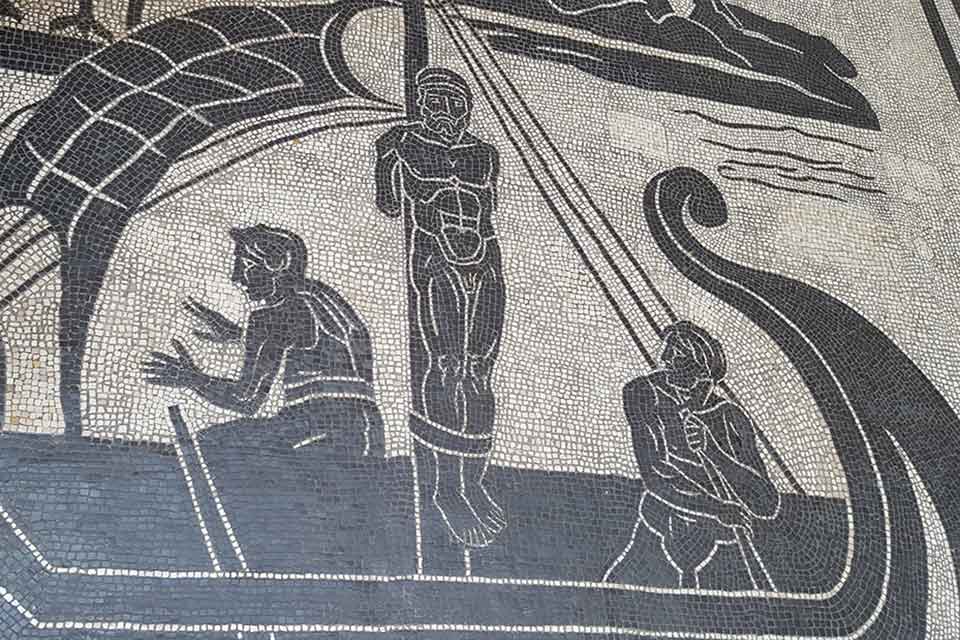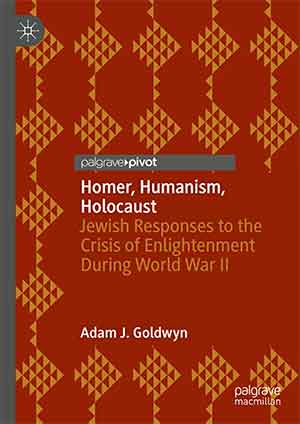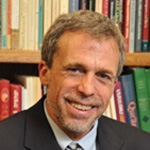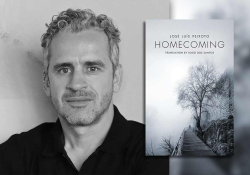European Jewish Intellectuals and Hellenic Ideals in Homer, Humanism, Holocaust

 In Homer, Humanism, Holocaust: Jewish Responses to the Crisis of Enlightenment During World War II (Palgrave Macmillan, 2022), Adam Goldwyn, a prolific scholar of Late Antiquity and Byzantium, has focused his attentions on a different set of keywords and written a lively, provocative, and erudite book. Goldwyn’s odyssey traces the disenchantment felt by European Jewish intellectuals with Hellenic ideals, sometimes from the perspective of experts in the field of classical history and literature (Arnold Momigliano, Erich Auerbach, George Steiner), and sometimes from the general perspective of Jewish intellectuals initially enamored of the Hellenic past (Adorno, Arendt, Bespaloff, Broch).
In Homer, Humanism, Holocaust: Jewish Responses to the Crisis of Enlightenment During World War II (Palgrave Macmillan, 2022), Adam Goldwyn, a prolific scholar of Late Antiquity and Byzantium, has focused his attentions on a different set of keywords and written a lively, provocative, and erudite book. Goldwyn’s odyssey traces the disenchantment felt by European Jewish intellectuals with Hellenic ideals, sometimes from the perspective of experts in the field of classical history and literature (Arnold Momigliano, Erich Auerbach, George Steiner), and sometimes from the general perspective of Jewish intellectuals initially enamored of the Hellenic past (Adorno, Arendt, Bespaloff, Broch).
Jewish philo-Hellenists comprise a vast set, beginning with Heinrich Heine in the early nineteenth century. Heine popularized the distinction of Hellenic and Hebraic in his Ludwig Boerne (1840) and, like the characters analyzed here, reconsidered later in life, famously noting that the Greeks carved statues out of marble, but Moses carved a system of values onto human beings. Rather than tracing the history of this Hebraic and Hellenic dichotomy, canonized by Matthew Arnold’s Culture and Anarchy (1869), Goldwyn wisely narrows his inquiry to the period of the Holocaust. To put Goldwyn’s thesis more simplistically than he deserves: these figures, the product of the emancipated bourgeoisie (Bürgertum), grew up venerating Greek literature and language as representing the acme of enlightened culture. Faced with the undeniable fact that the German nation, conspicuously including the academic professions, perpetrated barbaric acts, these figures were forced to reevaluate the lessons of the Iliad and Odyssey as well as the limits of the European Enlightenment, which turned frequently to the Greeks for a standard of morality and aesthetics.
Two examples of this reevaluation that Goldwyn handles brilliantly are Rachel Bespaloff’s De I’lliade (On the Iliad) and Theodor Adorno and Max Horkheimer’s Dialectic of Enlightenment. Goldwyn does his readers an especially great service by bringing Bespaloff back into focus, who was influenced by her Ukrainian Jewish Zionist upbringing and the Russian Jewish philosopher Lev Shestov, who, like Bespaloff, turned away from the Enlightenment and toward existentialism (57). As Goldwyn explains, Bespaloff dwelt on the sufferings of Hector, the futility of the Trojan conflict, and on Achilles as a Nietzschean figure whose values exalted violence, conflict, and struggle. She started reading The Illiad in 1938, undoubtedly connecting her critique with contemporary events. Goldwyn justifiably underscores her view that “mutual suffering is the central tenet of The Iliad” (68). For Bespaloff, then, “war is a pointless and stupid activity” yet inevitably part of human nature. While Bespaloff vacillated between optimistic and pessimistic viewpoints, the darker view prevails—she cannot be numbered among the “restorative scholars,” a term coined by Geoffrey Hartman and used to good effect by Goldwyn.
Goldwyn brings a new perspective, taking the savage indictment of Odysseus as the ultimate bourgeois individualist, plus the failures of the Enlightenment, and tying both to the emergence of anti-Semitism.
Unlike Bespaloff, Dialectic of Enlightenment remains a widely discussed and cited work. But Goldwyn brings a new perspective, taking the savage indictment of Odysseus as the ultimate bourgeois individualist, plus the failures of the Enlightenment, and tying both to the emergence of anti-Semitism. Goldwyn traces the reluctance of Adorno and Horkheimer to enter into these particulars and convincingly argues that their Odysseus resembles Adolf Eichmann, at least, as controversially reconstructed by their fellow émigré intellectual, Hannah Arendt.
What Goldwyn addresses he does with great intelligence and sensitivity. But a reader coming from the field of modern history cannot overlook some glaring lacunae. The body of scholarship on The Tyranny of Greece over Germany, to cite Eliza Maria Butler’s seminal work, receives no mention, nor do the important studies of German Orientalism by Suzanne Marchand, nor Yaacov Shavit’s exhaustive Athens in Jerusalem: Classical Antiquity and Hellenism in the Making of the Modern Jew. Despite a trenchant discussion of the case of the Hellenophile philologist Ulrich von Willamowitz, Goldwyn seems uninterested in the wider pathology of German scholarship’s disfigurements on the subject of Judaism and Christianity. Equally disconcerting, Goldwyn never interrogates the deliberate opposition of the Hellenic and the Hebraic, arguably an invidious distinction, but, inarguably, absolutely central. What can a modern historian make of reference to Perez Gay, the biographer of Hermann Broch, but none to Peter Gay, surely one of the foremost interpreters of the Enlightenment, whose discussion “The Useful and Beloved Past” directly addresses the genealogy and developments of this Hellenism?
Goldwyn’s discussion of Auerbach’s Mimesis deftly captures Auerbach’s reproach to a nationalistic German philology and to the concomitant erasure of Jews from the Western canon.
Goldwyn’s discussion of Erich Auerbach’s Mimesis deftly captures Auerbach’s reproach to a nationalistic German philology and to the concomitant erasure of Jews from the Western canon. But Goldwyn does not consider the overcorrection performed by Auerbach at the expense of the Greeks, a point articulated by Vassilis Lambropoulos’s The Rise of Eurocentrism. Goldwyn’s use of “Odysseus’ Scar” as a metaphor for the “memory scars” inflicted by the Holocaust scores as midrashic exegesis but skirts the point Auerbach actually makes: the detailed story of the scar occupies a foreground position in Homer’s narrative so extended and so typical that it renders Homer liable to “analysis” but not “interpretation.” This example typifies the insinuation of the superiority of Hebraic over the Hellenic—making “Odysseus’ Scar” the most political chapter of Mimesis. Sometimes a scar is just a scar.
One final comment, germane to the varied plight of émigré scholars.”Buber, like Auerbach,” Goldwyn writes, “lost his professorship when the Nazis came to power (though Buber resigned in protest in 1933 rather than, like Auerbach, being stripped of it) and fled (to Jerusalem)” (75). That sentence gives the impression than Buber fled Germany in 1933. But Buber courageously remained in Germany until 1938, serving the beleaguered Jewish community. For those of us who find early Buber too oracular, and late Buber too aware of his own stature, these were his finest hours.
Adam Goldwyn has written a searching book on a critical topic.
University of Oklahoma















